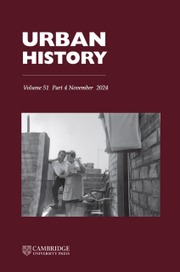Article contents
Progress illuminating the world: street lighting in Santiago, Valparaiso and La Plata, 1840–90
Published online by Cambridge University Press: 09 October 2002
Abstract
By examining a major port, a capital and a planned model city, this article links the diffusion of street lighting in nineteenth-century Latin America to changing notions of the night and of technology. In these three cities, lighting emerged as an eminently flexible strategy of modernization. Street lighting attracted urban officials and elite residents, who could economically install it as an antidote to crime, a complement to night life, or an emblem of progress.
- Type
- Research Article
- Information
- Copyright
- © 2002 Cambridge University Press
- 6
- Cited by




